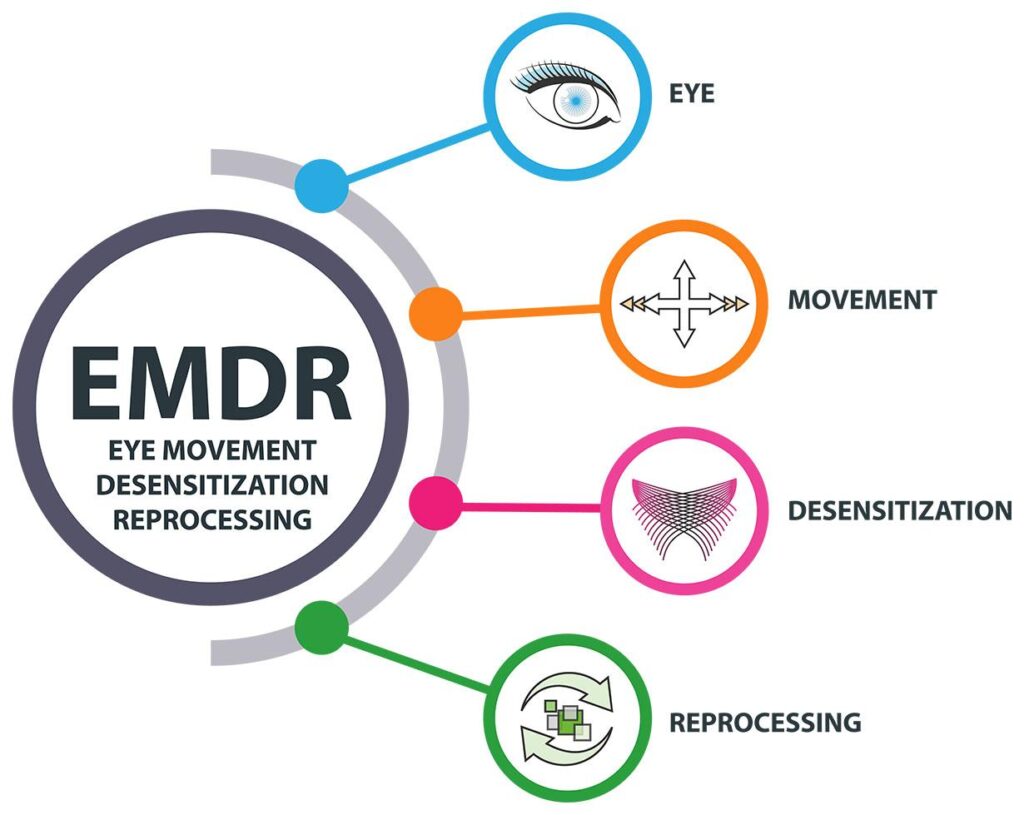In a world where trauma can leave lasting scars on the mind, Eye Movement Desensitization and Reprocessing (EMDR) offers a glimmer of hope for those seeking healing. This groundbreaking therapy technique has gained recognition for its ability to help trauma patients process and overcome painful experiences. Through a unique approach involving eye movements, EMDR has shown promise in reshaping the way individuals perceive and cope with their past traumas. Join us as we explore how EMDR can provide a path towards healing for those who have endured unspeakable pain.
Understanding Eye Movement Desensitization and Reprocessing Therapy
Eye Movement Desensitization and Reprocessing (EMDR) therapy is a powerful tool in helping trauma patients process and heal from distressing memories and experiences.This innovative therapy technique involves recalling traumatic memories while concurrently receiving bilateral stimulation, such as following a therapist’s fingers with your eyes or listening to tones in each ear. Through this process, EMDR helps reprocess traumatic memories, reducing their emotional intensity and empowering patients to move forward in their healing journey.One of the key benefits of EMDR therapy is its effectiveness in treating a wide range of trauma-related conditions, including post-traumatic stress disorder (PTSD), anxiety, depression, and phobias. By engaging both sides of the brain through bilateral stimulation, EMDR helps individuals access and process traumatic memories that may have been previously stuck or inaccessible. This can lead to profound healing and resolution of symptoms, allowing patients to regain control over their lives and experience a greater sense of peace and well-being. EMDR therapy is a transformative approach that can offer hope and healing to those struggling with the effects of trauma.
Benefits of EMDR for trauma Patients
EMDR therapy offers a unique approach to healing trauma by utilizing eye movements to help patients process distressing memories and emotions. One key benefit of EMDR is its ability to help trauma patients reprocess traumatic memories in a safe and controlled environment. This allows individuals to gradually desensitize themselves to the distressing memories and associated triggers, ultimately leading to a reduction in symptoms of PTSD.
Moreover, EMDR has been shown to be effective in decreasing anxiety, depression, and other symptoms commonly associated with trauma. By targeting the root of the trauma and helping patients reprocess their memories, EMDR can lead to long-lasting healing and recovery. This therapy can also help improve self-esteem and increase feelings of empowerment in trauma patients, allowing them to regain control over their lives and move forward from past experiences.
Key Components of EMDR Therapy
One of the is bilateral stimulation, which involves the use of eye movements, taps, or sounds to help patients process traumatic memories. This process helps to reprocess these memories in a way that reduces their emotional intensity and allows for more adaptive beliefs to be formed. Additionally, EMDR therapy often involves the use of specific protocols and procedures to guide the therapist and patient through the reprocessing of traumatic memories.
Another significant component of EMDR therapy is the concept of dual awareness, which involves helping patients stay present in the here and now while also accessing memories of past traumatic events. This dual awareness helps patients to process these memories without becoming overwhelmed by them. By helping patients maintain this balance between the present and the past, EMDR therapy can be an effective tool in helping trauma patients heal and move forward in their lives.
Recommendations for Implementing EMDR in trauma Treatment
EyE Movement Desensitization and Reprocessing (EMDR) is a powerful therapy technique that can greatly benefit trauma patients. By engaging in bilateral stimulation, either through eye movements, taps, or sounds, EMDR helps process traumatic memories and reduce their impact on the individual’s mental health. Here are some :
1. Establishing Safety: Before diving into EMDR therapy,it is crucial to ensure that the patient feels safe and supported. building a trusting relationship with the therapist is key to the success of the treatment.
- 2. Assessing Readiness: It’s critically important to assess the patient’s readiness for EMDR therapy. Some individuals may not be suitable candidates for this type of treatment due to their current mental state or other factors.
- 3. Creating a Treatment Plan: Developing a structured treatment plan that outlines specific goals and steps for the EMDR sessions can definitely help guide the therapy process and track progress effectively.
Future Outlook
Eye Movement desensitization and Reprocessing (EMDR) has shown great promise in helping trauma patients overcome their past experiences and reclaim their lives. Through a combination of therapy sessions and guided eye movements, patients can work through their traumas in a safe and supportive environment. If you or someone you know is struggling with the effects of trauma, consider exploring EMDR as a potential avenue for healing. Remember, there is always hope for a brighter future ahead.


